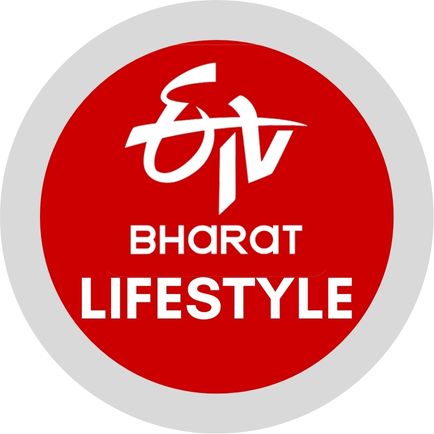The healthcare industry is no stranger to innovation. From cutting-edge surgical robots to AI-driven diagnostics, technology continues to push the boundaries of what’s possible. Yet, the healthtech revolution we need may not be a single piece of technology but a shift in how healthcare is delivered. Enter integrated healthcare, which reduced waiting times, streamlined processes, and better outcomes.
What Is Integrated Healthcare?
Integrated healthcare is a model that blends diverse medical specialties and technologies into a unified system. Instead of patients navigating a fragmented web of clinics, labs and hospitals, they receive holistic care through seamless coordination. Imagine walking into a health city where consultations, diagnostics, treatments, and follow-ups happen under one roof, or virtually.
A 2024 study by BMC Health Services Research found that Indian Model of Integrated Healthcare (IMIH) offers features that consider resource constraints and local context while being economically viable. As Col (Dr) Rajendra P. Vennam, CEO and CTO of Drucare, puts it: “Integrated healthcare, boosted by technology, removes much of the legwork patients face. Tools like electronic health records (EHRs) and wearable devices empower clinicians to deliver focused and timely care.”

The Science Behind It
The foundation of integrated healthcare lies in its ability to leverage science and technology:
- Electronic Health Records (EHRs): These digital repositories consolidate patient histories, lab results, and treatment plans, accessible to every specialist involved in a patient’s care. This reduces redundant tests and speeds up decision-making.
- Artificial Intelligence: AI-driven tools analyse patient data to predict complications and recommend personalised treatment. For instance, AI can identify early signs of diabetic retinopathy or recommend interventions for chronic diseases like hypertension.
- Telemedicine: Virtual consultations bring specialists to patients’ homes, cutting travel time and costs. Platforms like Drucare integrate telehealth into their offerings, ensuring accessibility even in remote areas.
- Wearable Health Trackers: Devices like smartwatches monitor vitals such as heart rate, glucose levels, and blood pressure in real time. This data feeds into the healthcare ecosystem, enabling proactive interventions.
Real-World Applications in India
1) Sharda Care – Healthcity
Specialties like oncology, cardiology, and neurosciences are integrated with diagnostics, ICU care and rehabilitation, creating a one-stop destination for healthcare.
2) Apollo Health City, Hyderabad
One of the pioneers in India, Apollo Health City combines traditional specialties with cutting-edge technology like robotic surgeries and AI diagnostics.
3) Manipal Hospitals
This chain integrates care across its network, allowing patients to seamlessly transition between facilities for advanced treatments or follow-ups.
How Integrated Healthcare Reduces Waiting Times
Traditional hospitals often require patients to shuttle between diagnostic centres, specialists, and treatment facilities. This fragmented approach leads to delays that can be critical, particularly in emergencies. Integrated healthcare eliminates these inefficiencies.
As Rohit Bhatia, DGM - Brand Communication & Digital Marketing, Sharda Care - Healthcity says, “Our model focuses on patient convenience. Whether it’s managing complex cancer treatments involving surgery, chemotherapy, and radiation or addressing neurological disorders requiring diagnostics, surgery and rehabilitation, we streamline care for better outcomes and a superior experience.”

For instance, Sharda’s tie-up with Singapore-based SingHealth has introduced a 59-bedded emergency setup, further enhancing its capability to address critical cases efficiently.
Col (Dr) Vennam adds:
“For patients, having control over their health records and receiving timely updates improves satisfaction and trust. They feel empowered and more involved in their healthcare journey.”
Adds Rohit Bhatia, "Another example is the management of a patient with a neurological disorder, who might require input from neurologists, spine surgeons, and rehabilitation specialists. Instead of the patient having to visit different centres, our integrated model allows a seamless transition between diagnostics, surgery, and post-operative care for the patient's comfort."
Technological Innovations in Patient-Centric Care
- AI-Powered Diagnostics: Tools like AI-enabled imaging systems detect abnormalities in X-rays or MRIs faster than human counterparts. These insights are shared instantly with the care team, reducing diagnostic delays.
- Smart Scheduling Systems: Machine learning algorithms optimize appointment schedules, minimizing patient wait times and ensuring efficient resource allocation.
- Robotic Process Automation (RPA): Administrative tasks, from billing to patient follow-ups, are automated, freeing up healthcare workers to focus on patient care.
- Remote Monitoring: Wearables and IoT-enabled devices continuously track patient health metrics. In the case of abnormalities, alerts are sent to care providers for immediate action.
Challenges And Gaps
Despite its promise, integrated healthcare faces hurdles. Implementing interoperable systems, maintaining data security, and training staff on new technologies require significant investment. Moreover, ensuring equitable access in rural and underserved areas remains a challenge.
However, advancements like blockchain for secure data sharing and AI-powered decision support systems are addressing these gaps. As technology becomes more accessible, integrated healthcare is expected to expand its reach.
Why Integrated Healthcare is the Future
By reducing waiting times, minimising redundancies, and improving outcomes, this model prioritises the patient. As India continues to grapple with the twin challenges of chronic diseases and an overburdened healthcare system, integrated healthcare offers a sustainable solution.
Disclaimer: The information provided in this health article is for general informational purposes only and is not intended as medical advice. It is not a substitute for professional healthcare consultation, diagnosis, or treatment. Always seek the advice of your physician or other qualified health provider with any questions you may have regarding a medical condition.



